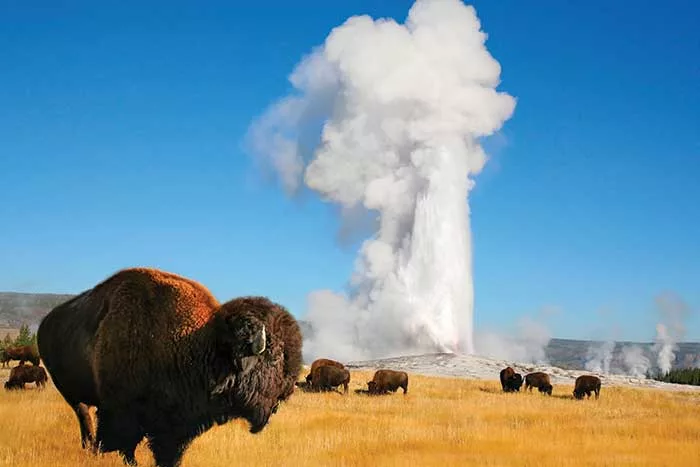
It is scary living in the New Madrid Earthquake Zone. But there is something even scarier out there. A lot of folks have been asking me about Yellowstone’s dangers so here is what I know. Yellowstone National Park in the US states of Wyoming, Montana and Idaho is a popular 9000sq km tourist attraction with wildlife, dramatic scenery and geothermal wonders. The United Nations world heritage site, which lies over giant chambers of molten magma, is actually the world’s largest super volcano, which erupted 2.1 million, 1.3m and 640,000 years ago, causing massive devastation across the planet. Today, Yellowstone bubbles away with its hot springs and geysers with endearing names.
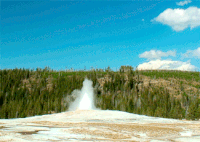
The most famous is Old Faithful, so called because it puts on a show for visitors, every 91 minutes by shooting gallons of steaming hot water into the air. A cluster of earthquakes at Yellowstone National Park followed by the fourth eruption of its usually dormant geyser has sparked speculation about the world’s largest super volcano. Is the big one about to blow, blanketing the US with ash and sending the Earth into a volcanic ice age? Probably not, but some troubling signs are there. The US National Park Service revealed that a park visitor first spotted the rare eruption of another geyser, Steamboat Geyser on Friday morning, May 4th. Steamboat hadn’t erupted since September 2014. Steamboat Geyser previously erupted on March 15 and April 19, after lying dormant for three years.

The geyser in Wyoming can shoot water as high as 300 feet into the air, making it the second most powerful geyser in recorded history. The “unusual” amount of eruptions at the site, the third over a six-week period, set off fears of a volcanic blast in the Yellowstone National Park. It is now the world’s tallest and most powerful active geyser. The eruptions came on the back of earthquake activity at Yellowstone recorded by the US Geological Survey (USGS). A swarm of more than 200 earthquakes struck Yellowstone over two weeks, starting on February 8 and increasing on February 15 in an area 13km northeast of West Yellowstone, Montana. The USGS reported that a bigger series of tiny quakes hit the area but were too seismometers to record them. A swarm indicates a shifting of the major tectonic plates beneath the Earth’s surface, or movements of water, gas or magma. However, geologists at the park have been quick to clarify that the seismic activity and eruptions are not yet indicative of a more destructive volcanic eruption brewing beneath Wyoming.
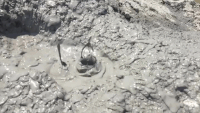
While it has been dormant for more than 70,000 years, the Yellowstone volcano has remained active and still holds the potential to erupt at some point in the future. Such an eruption would see lava flows cover a radius up to 30 or 40 miles in diameter, with “disastrous” accumulations of 10 or more centimeters in a radius of up to 500 miles. YELLOWSTONE volcano computer modelling has helped scientists uncover the secrets behind recent seismic activities of vast magma bodies beneath the monstrous supervolcano, pointing towards the presence of a second untapped source of magma below the Yellowstone National Park. Yellowstone’s gigantic caldera last erupted some 630,000 to 640,000 years ago and scientists believe the supervolcano blows roughly every 600,000 to 700,000 years. Many scientists fear the volcano is a long overdue ticking time bomb. Three things are said to indicate that a super volcano is about to erupt: increased seismic activity, increased ground deformation and changes in the hydrothermal system or increased gas outlet at the surface.

The seismic activity and gas outlet has occurred since the beginning of 2018, but apparently not to a significant enough extent and without any sign of ground deformation. Michael Poland, head scientist at the USGS Yellowstone Volcano Observatory in Washington State, said a major quake was not on the way. Yellowstone has been a national park since 1872, but it was only in the 1960s that scientists realized the scale of the volcano — it’s 44 miles across — and not until the 1980s did they grasp that this thing is fully alive and still threatens to erupt catastrophically. Yellowstone is capable of eruptions thousands of times more violent than the Mount St. Helens eruption of 1980. The northern Rockies would be buried in multiple feet of ash. Ash would rain on almost everyone in the United States. It’d be a bad day. It’s unclear how much warning organizations like the United States Geological Survey (USGS) would get, but shortly before the eruption happened, the ground around Yellowstone National Park would rise upwards somewhat. Hydrothermal system, including the geysers and geothermal pools, would rapidly heat to temperatures above boiling, and they’d likely become extremely acidic – more so than usual. A swarm of earthquakes would be detected making their way towards a central point, indicating magma rising rapidly through the crust. Then, the roof rock would fail and the eruption would begin.
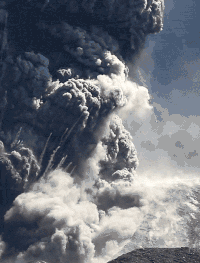
A vast column of ash and lava would shoot upward to heights of around 16 miles. Sustained by both raw explosive energy and the release of heat through cooling lava blebs and bombs, it would sustain itself for days, pumping ash into jet streams that would transport it around the stratosphere. The most dangerous aspect of the eruption, however, is the ash fallout, both locally and globally. Breathe this in and it’ll lacerate your lungs and form a glassy cement. It’s also about six times denser than water, which means plenty of architecture would collapse under its weight as it accumulates on rooftops. Poland points out that “even a few tens of centimeters of wet ash could cause weak buildings to buckle.” Roads and sewer systems would clog and break down, water supplies would be contaminated, and electrical grids would short out. Millions of homes could become uninhabitable. In this sense, those taking shelter in Montana, Idaho, and Wyoming would be at the highest risk of harm. They would be so for up to a month, which is a fairly solid bet as to how long the eruption would ultimately be. An area about 50 miles around the vent would be covered in about 10 feet of ash in just a few days. The ash’s injection into the stratosphere would cause it to darken the sky and cool regional, if not planet wide temperatures. If the eruption is particularly sulfur-rich – an efficient blocker of sunlight – then temperatures would plummet several degrees, to the point where the next few years will lack a summer. “It’s likely there would be significant cooling for many years,” Poland explains. “But how long it would last, and how much cooling would occur, I can’t say. I’m not sure anyone can.”
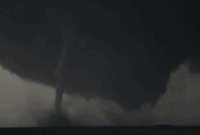
A caldera-forming blast at Yellowstone would “alter global weather patterns and have enormous effects on human activity” for many years, according to the USGS. The paths and timings of monsoons would change. Tropical cycle formation would become far more unpredictable for a while and the spread of waterborne-diseases could take highly erratic paths. Agriculture would also suffer, which could severely disrupt food supplies. This would add to the overall economic damage, which would be severe. The USGS is keen to point out that “scientists at this time do not have the predictive ability to determine specific consequences or durations of possible global impacts from such large eruptions.” Whatever happens, though, it won’t cause civilization to come crashing down. “It would not mean the end of life on Earth,” Poland tells us. Bottom line: Yellowstone is unpredictable. There’s no sign at all that this old volcano is going to erupt anytime soon, either in a big way or a huge, show-stopper way. But neither is there any evidence that it’s running out of steam.





